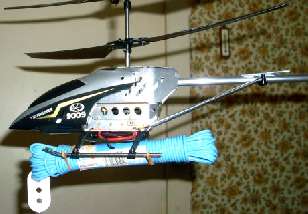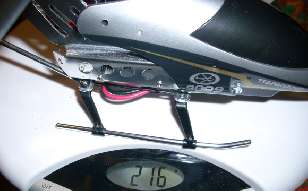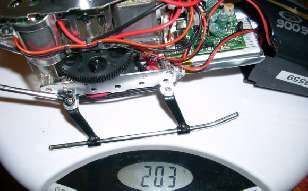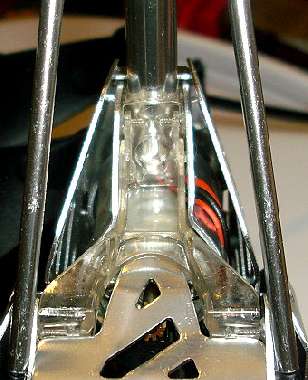Rick's b.log - 2010/11/12
You are 18.191.189.124, pleased to meet you!
Rick's b.log - 2010/11/12 |
|
| It is the 24th of November 2024 You are 18.191.189.124, pleased to meet you! |
|
mailto: blog -at- heyrick -dot- eu
I used a rubber band to attach some things for testing. The first was a pack of plastic coated nylon line, as shown:
The next test was a four-pack of AAA cells. Weight? 50g. The helicopter could maintain a hover with these but, as you'll see from the video, getting into the air in the first place is just too much to ask:
The helicopter itself weighs in at 216g. Strange, I could have sworn it was closer to 230g last week? The battery is flat. That's it. The electricity weighs the other 14g. ☺
Next thing to do... find that little Spanish digicam!
Further experiments with the little helicopter
There is something of a problem with weight capacity, not to mention the fact that it isn't resistant to breezes barely perceptable. Heck, with some test flights indoors, if I let the helicopter take off from my hand and I backed away, my wake literally sucked the helicopter after me - as shown in this brief video:
Of course, I stopped moving so the helicopter settled into a hover, after a mild peturbation as a result of one of the rotors clipping the camera. Oops!
By the way, the time on the clock? That's AM. 8-)

The line weighed 63g and the helicopter struggled to maintain a steady hover at full throttle.



Rick, 28th November 2010, 00:37
I'll keep you posted...
| © 2010 Rick Murray |
This web page is licenced for your personal, private, non-commercial use only. No automated processing by advertising systems is permitted. RIPA notice: No consent is given for interception of page transmission. |